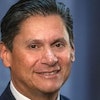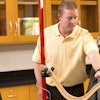The college affordability crisis has students working and borrowing all that they can in order to manage the cost of school. But a new report from the National College Attainment Network (NCAN) shows that the high school class of 2022 left an estimated $3.58 billion on the table last year in the form of unclaimed Pell Grant funds—around 14% of annual Pell expenditures.
That unclaimed money leads directly to fewer students attending and completing college.
 Bill DeBaun, senior director of data and strategic initiatives at the NCAN
Bill DeBaun, senior director of data and strategic initiatives at the NCAN
The report’s methodology was simple. The NCAN started with the number of high school graduates who did not fill out the Free Application for Federal Student Aid (FAFSA), which was roughly 1.65 million. Assuming that non-FAFSA completers would be eligible for Pell Grants at the same rate as people who did fill out the application, the NCAN found that about 767,000 students would have qualified for funding but did not complete the form. The non-profit then multiplied this number by the average Pell Grant award of $4,686 to get the nearly $3.6 billion total.
There are plenty of reasons why students who might be eligible for Pell Grants might not complete the FAFSA. For one thing, it’s complex..
 Dr. Michael Kofoed, an associate professor of economics at the United States Military Academy in West Point
Dr. Michael Kofoed, an associate professor of economics at the United States Military Academy in West Point
However, it’s difficult to tell whether a student might be Pell-eligible without investing the time and energy that the FAFSA requires. Another problem is that many people who are eligible for aid may mistakenly think that they are not.
“It’s very difficult for lower-middle income [earners], to judge whether or not they will be Pell-eligible,” said Kofoed.
Students may also be debt averse, not realizing that the Pell Grant doesn’t need to be repaid. And some may be reluctant to share financial data with the government.
The $3.6 billion left behind represents a strong increase from 2017, when $2.3 billion went unclaimed, according to an analysis by NerdWallet, a personal finance company. The report attributes this change primarily to increases in the value of Pell Grant awards under the Biden administration. This year’s $3.58 billion represents a decrease, however, from the class of 2021’s $3.75 billion unclaimed. DeBaun said that this was because of decreased disruption from the pandemic.
“The class of 2022 was much more likely to be attending school in person where they were better connected to support, to school counselors, to financial aid nights, and FAFSA completion events,” he said.
The report also included state-level data, finding that the areas with the highest FAFSA completion rates were Washington D.C. (74%), Tennessee (71%), and Louisiana (69%). Tennessee’s position, said Kofoed, was likely a result of its Tennessee Promise program, which offers free community college but requires filling out the FAFSA. Louisiana is the first state to adopt a universal FAFSA completion policy, which makes filling out the FAFSA a requirement for high school graduation. Other states with similar policies, including Illinois, Alabama, and Texas, are among the top ten in terms of FAFSA completion.
States with the lowest completion rates included Alaska (35%), Utah (38%), and Arizona (47%). According to Kofoed, some of the reason is cultural.
“The intermountain region is always super-low because there is this strong bias against taking on loans,” he said. “A lot of it is the teachings of the Mormon church. So, some students will say, ‘The FAFSA is what I have to do to get a student loan, and I don’t want a student loan, and I think my parents make too much for a Pell Grant, so I’m just not going to complete [it] at all.”
NCAN also offered recommendations for how states could encourage FAFSA completion. The number one proposal was that more states should institute universal FAFSA completion policies, as Louisiana has done, along with support to help students with the form. Additionally, NCAN called on states to do a better job of sharing FAFSA data with districts, high schools, and communities so that outreach to students can be better targeted. It also promoted FAFSA completion challenges, friendly competitions among districts or schools to win prizes based on FAFSA completion rates or growth. Finally, it suggested the continued use of COVID-19 relief funding for college and career readiness programming.
Though the amount of money left on the table is massive, the report finds reasons for hope in the short-term. According to DeBaun, the high school class of 2023’s FAFSA completions are up about 6% year over year. Starting with the 2024-25 school year, the FUTURE Act will allow FAFSA filers to have their income data imported directly from the IRS, and the FAFSA Simplification Act will reduce the number of questions on the application significantly.
However, DeBaun cautioned that improved FAFSA completion alone is a not a cure for the deeper problem of low post-secondary attainment.
“I think we’ll see an [increase] in FAFSA completion as friction in the process is reduced, but we shouldn’t expect that to be some kind of silver bullet,” he said. “After completing the FAFSA, students still need support in finding success on college campuses that keeps them enrolled and gets them all the way to a career and credential.”
Jon Edelman can be reached at [email protected].


















